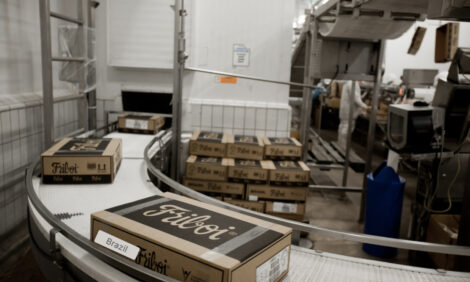



Meeting the Greatest Global Farming Challenge
ANALYSIS - The world is facing the greatest farming challenge of all time with a booming global population and a potential quadrupling of the number of people who will be able to afford to eat high quality diets.This was the message from Dennis Avery, the director of the Center for Global Food Issues, to the 58th International Congress of Meat Science and Technology in Montreal, Canada.
In his keynote speech, ‘The Future for Healthful Meat’, Mr Avery said that food demand and probably meat demand as well will double by 2050.
And he questioned how such a massive growth in demand for food and meat will be met without “displacing huge tracts of wildlife habitat and its dependent species for more low yield farming and pastures”.
Mr Avery said to meet the goals and needs of a growing population, there should be an end to subsidies and mandates for corn ethanol and biofuels, more high yield farming research aimed at rapidly tripling the food productivity of the land now in farming and opening direct conversation between farmers and consumers on the merits of intensified farming to protect wildlife.
“The reality is that the world population is set to stabilize, probably at about eight billion people, after another 34 per cent increase, and probably about 2045,” said Mr Avery.
“Affluence will instead become the biggest factor in 2050’s food requirements. I estimate seven billion affluent people then, instead of today's 1.5 billion.
“The current ‘minor’ crises over American mortgage subsidies and European overspending need to be corrected – and I predict the correction will be painful. However, capitalism and science are then poised to produce very large increases is global incomes, both in the West and in the emerging economies. There should be no reason that the Chinese cannot have dairy products and beef to go along with their pigs and poultry. There is no reason why India should not have the poultry and ice cream they crave. Africa, too, should be able to have its Green Revolution, finally. This will not come overnight, but it will almost certainly come.
“There will even be a pet challenge as people have greater affluence and fewer children. I predict that India and China will eventually add hundreds of millions more cats and dogs to their households – none of them vegetarian.”
Mr Avery told the Congress that the real challenge for farmers and their support institutions in the next 40 years will be to save the world's wildlife and wildlands as well as feeding a population of eight to nine billion.
He said the key will be to triple food yields from the current crop and pasture lands and to do this the farming sector will have to invest in intensification.
“This will be very difficult, because at the moment, the affluent publics think they want ‘organic’, ‘natural’, ‘local’ food production – the very opposite of high-yield wildlands conservation. They have been carefully taught this misconception by the intellectual elite, which was actually worried about overpopulation. Now that the world’s population growth is nearly over, we can put that worry behind us,” he said.
Mr Avery also attacked governments, largely in the developed world, for diverting grain and oilseed crops from the food bank to produce fuel.
“Food prices have shot up in recent years, severely damaging the markets for meat, milk and eggs. The real reason is simple. The United States, the European Union, Canada, and Indonesia decided – suddenly – to divert a major portion of their grain and oilseed crops to making auto fuel instead of food,” he said.
“This food diversion produced lots of inflation in food prices, but little gain in energy supplies. One-third of the US corn crop in 2011 went into ethanol production, but the true net energy gain from ethanol is only about 108 gallons worth of gasoline per acre. This means an acre of corn can fuel about seven family cars for a week instead of feeding a family for a year. Ethanol represents a pitiful solution to the energy crisis and carries with it an increased risk of hunger for the world.”
He said the diversion of land use and grains to energy production rather than food was made on a false premise that it is greener and is reducing global warming.
“Today’s high food prices have given us a peek at the world’s impending food reality with current government policies-expensive food and massive losses in global wildlife habitat – unless we shift the ‘renewable fuels’ resources back to food production,” he said.
Mr Avery forecast that, in future, food production will be stimulated by more industrial fertiliser and will also see more and safer pesticides and veterinary medicines. Crops will also rely more on irrigation systems.
However, he added that the consumer has to be convinced that this is the right way to go.
He predicted that biofuels will be “crowded out of the market” in favour of meat, milk and eggs.
“They will be pushed out by public discontent,” he said.
With food production having to rise by 70 per cent to meet the growth in population, meat consumption is expected to rise from 270 million tonnes a year to 470 million tonnes – an increase of 42 per cent.
“I expect an even higher rate of market growth for both poultry and pork than the USDA and FAO predict in the years ahead,” Mr Avery told the congress.
“In pork, I am impressed that China believes its massive pork consumption will double again as its rural incomes rise.
“I am impressed that the leader of China is saying he wants to provide milk for each school child, in a nation where milk has not been widely available until recently.
“I am impressed with the demonstrated demand growth for milk in India, and the potential for that to continue. And, with the potential sales growth for ice cream throughout the developing countries as they get electricity.
“I further believe the FAO is underestimating the meat and livestock product demand increase, probably believing that higher costs for meat and livestock production will sharply limit demand growth.”
He forecast that incomes will rise sharply to meet the prospective rise in meat and food prices.
Furthermore, higher incomes and their related luxury market potential will stimulate production efficiencies, and attract new farming, processing and infrastructure capacity investments to meet the potential demand.
Further Reading
| - | You can view the full presentation by clicking here. |









